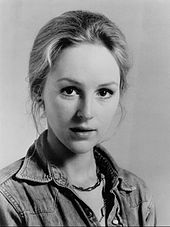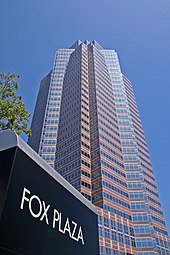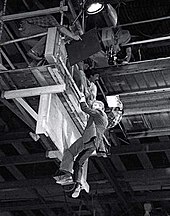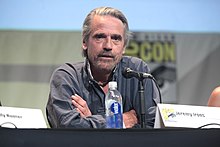Die Hard
This is an accepted version of this page Die Hard is a 1988 American action film directed by John McTiernan and written by Jeb Stuart and Steven E. de Souza based on the 1979 novel Nothing Lasts Forever by Roderick Thorp.
It stars Bruce Willis, Alan Rickman, Alexander Godunov, and Bonnie Bedelia, with Reginald VelJohnson, William Atherton, Paul Gleason, and Hart Bochner in supporting roles.
Die Hard follows a New York City police detective, John McClane (Willis), who becomes entangled in a terrorist takeover of a Los Angeles skyscraper while visiting his estranged wife during a Christmas Eve party.
Upon its release in July 1988, initial reviews were mixed: criticism focused on its violence, plot, and Willis's performance, while McTiernan's direction and Rickman's charismatic portrayal of the villain Hans Gruber were praised.
On Christmas Eve, New York City Police Department (NYPD) Detective John McClane arrives in Los Angeles, hoping to reconcile with his estranged wife, Holly, at a party held by her employer, the Nakatomi Corporation.
Other cast members include Gruber's henchmen: Bruno Doyon as Franco, Andreas Wisniewski as Tony, Joey Plewa as Alexander, Lorenzo Caccialanza as Marco, Gerard Bonn as Kristoff, Dennis Hayden as Eddie, Al Leong as Uli, Gary Roberts as Heinrich, Hans Buhringer as Fritz, and Wilhelm von Homburg as James.
Stuart had six weeks between contracted work so his agent Jeremy Zimmer contacted Lloyd Levin, the head of development at the Gordon Company, a producing arm of 20th Century Fox.
[25] The prevailing action archetype of the era was a muscle-bound, invincible macho man like Arnold Schwarzenegger, who was offered the role, but he wanted to branch out into comedy and turned it down to star in Twins (1988).
[17][28] Willis received $5 million for the role, giving him a salary comparable to more successful, established film actors like Dustin Hoffman, Warren Beatty, and Robert Redford.
[38] Silver wanted a scene between McClane and Gruber before the film's denouement, but De Souza could not think of a plausible scenario until he happened to overhear Rickman affecting an American accent.
[38] The actors were also given some room to improvise, like Theo's line, "The quarterback is toast", Bochner's "Hans, bubby, I'm your white knight", and the henchman Uli stealing a chocolate bar during the SWAT assault.
[50] Before hiring composer Michael Kamen, McTiernan knew he wanted to include Beethoven's 9th Symphony (commonly known as "Ode to Joy"), having heard it in Stanley Kubrick's A Clockwork Orange (1971).
[50][53][52] The samples of "Ode to Joy" are played in slightly lower keys to sound more menacing; the references build to a performance of the symphony when Gruber finally accesses the Nakatomi vault.
[39] During a scene where McClane shoots a terrorist through a table, Willis suffered a permanent two-thirds hearing loss in his left ear caused by firing loud blank cartridges close to his head.
[59] Supervised by visual effects producer Richard Edlund, Boss Film Studios engineered an automated system using a computer that rapidly refocused the camera via a motor on its focus ring.
[44] Because Hans Buhringer (Fritz) was an inexperienced actor and filming was behind schedule, a Native American stuntman was put in a blond wig and equipped with squibs to capture the character's death in one take.
[15][81] Film critic Sheila Benson believed this demonstrated a generational shift in audiences and their tastes; in particular, 25- to 37-year-old men had turned against alcohol abuse, sexism, and mindless machismo.
[84] The scene in which the terrorists take over the building was described as a "textbook study" by Kevin Thomas, providing a strong introduction to both McTiernan's abilities and De Bont's cinematography.
[89][90][91] Reviewers including Terry Lawson and Paul Willistein believed that despite expectations, Willis had been well cast, bringing a necessary vulnerability and sense of humor to a contemporary hero; one who displays remorse, fear, and indecision without being overly macho or comedic, and delivers dialogue that other action stars could not.
[85][87] Reviewers generally agreed that Willis's dramatic acting was unimpressive or limited; Jay Boyar believed his abilities were perfect for McClane, although Kehr criticized him as only a television-level star.
[89][100][90] Ebert focused his criticism on the police captain (portrayed by Gleason), citing the character as an example of a "willfully useless and dumb" obstruction that wasted screen time and weakened the plot.
[91] Die Hard was one of several 1988 films labeled "morally objectionable" by the Roman Catholic Church, along with The Last Temptation of Christ, Bull Durham and A Fish Called Wanda.
Players choose either McClane or secondary character Chris Thompsen to battle through Nakatomi Plaza, defeat terrorists led by White Fang, and rescue the President's daughter.
[4] Several male characters who are driven by rage or ego suffer for it including the FBI agents, Karl, Ellis, and McClane who nearly loses Holly by showing off after shooting Gruber.
[131] Brody contrasts McClane—an all-American stereotype compared to Western cowboy stars like Roy Rogers, John Wayne and Gary Cooper—to Gruber, a classically educated, European villain who refers to America as a "bankrupt" culture.
[4][18] Elizabeth Abele wrote that when compared to the superheroes of the previous decade in films like Superman (1978) and Raiders of the Lost Ark (1981), McClane is portrayed as physically but realistically masculine, conveying the idea of a "real man" who possesses independent, intrinsic strength.
[133] According to Justin Chang and Mark Olsen, this can be seen as a response to Reaganism—the political positions of United States president Ronald Reagan—promoting values of the American dream, self-reliance, initiative, and technological advancement.
[131] Darin Payne wrote that Die Hard reflects the contemporary decline of men as the main household earner as more women joined the workforce and blue-collar jobs were being lost to foreign countries.
[84] Brody notes that the film can also be considered progressive in its portrayal of its African American characters, as cast members VelJohnson, Gilyard, and White are featured in prominent and important roles.
[141] Before Die Hard's release, Hollywood action films often starred muscle-bound men like Schwarzenegger and Stallone, who portrayed invincible, infallible, catchphrase-spouting heroes in unrealistic settings.











